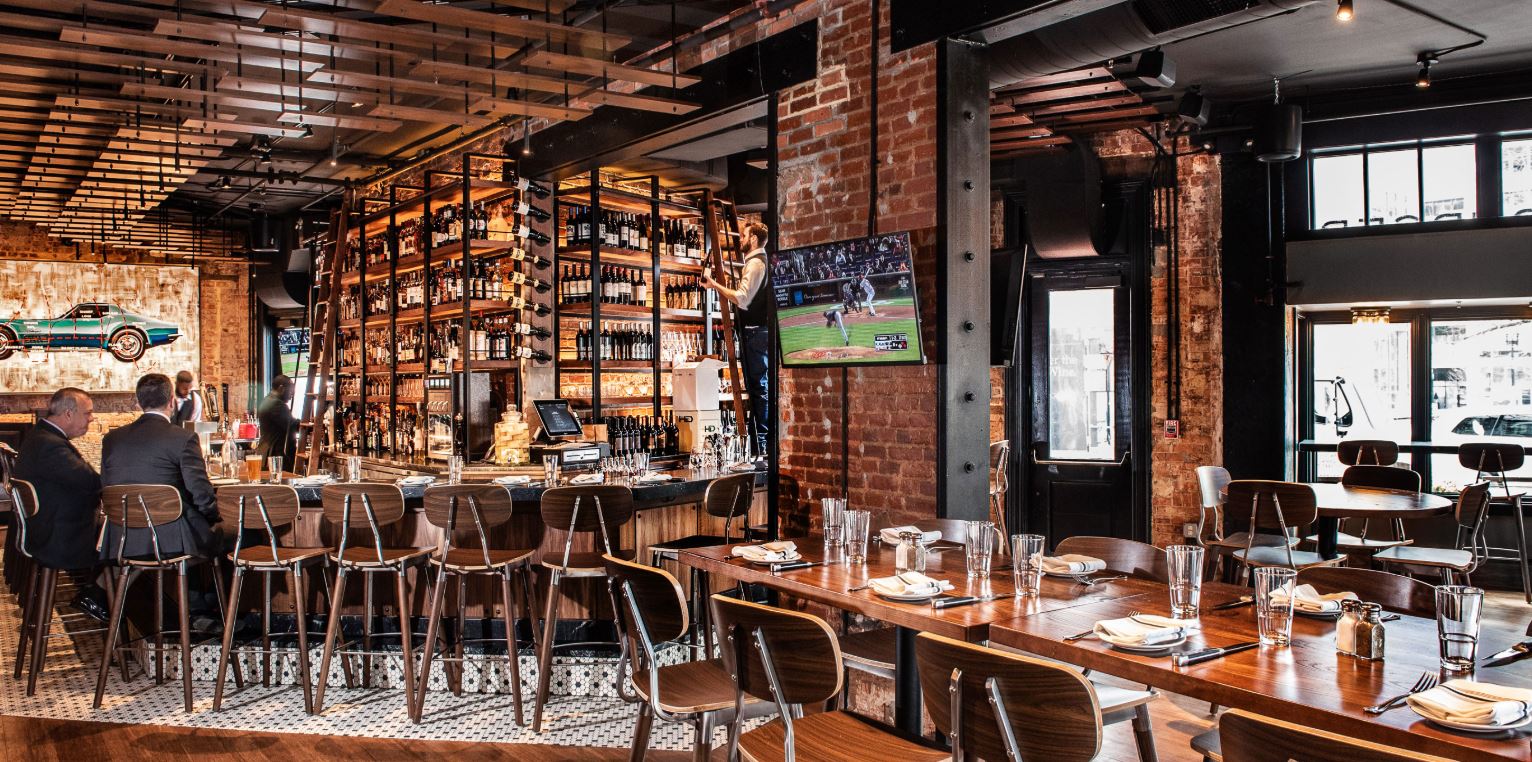Pan Asian Restaurant Islamabad: Discover Exquisite Asian Food
Pan Asian Restaurant Islamabad: Discover Exquisite Asian Food
Blog Article
Savor Genuine Oriental Cuisine With a Pan-Asian Spin for a Cooking Adventure
Getting started on a cooking trip with authentic Oriental cuisine, enhanced with a Pan-Asian twist, supplies an unique opportunity to discover the abundant tapestry of tastes that specify the area's varied cooking traditions. As you contemplate these tempting meals, take into consideration the cultural narratives and historic impacts that form them, each bite offering a tale waiting to be found. pan asian dining Islamabad.

Discovering Pan-Asian Tastes
In the realm of worldwide gastronomy, Pan-Asian cuisine stands apart for its impressive variety and the unified interplay of tastes from various Oriental societies. This cooking technique commemorates the special components and abundant customs located throughout the continent, creating a tapestry of tastes that is both fascinating and rewarding. Key to Pan-Asian food is its capacity to balance different flavors-- wonderful, salted, spicy, and sour-- while highlighting the quality and high quality of each ingredient.
From the umami-rich soy sauce of Japan to the fiery chili peppers of Thailand, Pan-Asian food uses a substantial palette of tastes. These components are usually combined in innovative means, enhancing meals with layers of intricacy. For example, making use of aromatic natural herbs such as lemongrass and cilantro, common in Vietnamese and Thai cuisine, includes a revitalizing brightness to dishes, while the consolidation of coconut milk supplies a luscious, abundant texture.
The focus on fresh fruit and vegetables and aromatic flavors ensures that each dish is not just a feast for the taste but likewise for the detects. Pan-Asian food welcomes restaurants to start a culinary journey, exploring the large and varied landscapes of Oriental gastronomy with every bite.
Blend Meals to Try
While Pan-Asian cuisine is commemorated for its standard tastes, the contemporary cooking landscape is progressively embracing blend recipes that mix these classic components with impacts from other areas. This innovative method not just honors the abundant heritage of Eastern cookeries yet likewise presents novel preference experiences that appeal to modern tastes buds.
A prime instance of such a combination recipe is the Korean-Mexican taco, where marinated bulgogi beef is wrapped in a cozy tortilla, topped with kimchi and a hot gochujang-infused salsa. This mix marries the strong, mouthwatering flavors of Korea with the vivid, fresh components of Mexican food. In a similar way, sushi burritos have actually gotten popularity, joining together the delicate creativity of Japanese sushi with the passionate, hand-held ease of a burrito, often including fusion components like tempura shrimp and avocado with a drizzle of wasabi mayo.
An additional noteworthy recipe is Thai curry ramen, which instills the creamy, aromatic seasonings of Thai curry into the calming brew of conventional Japanese ramen, producing a harmonious mix that entices the detects. These blend meals expand past plain novelty; they represent a cooking discussion in between societies, urging exploration and advancement worldwide of Pan-Asian cuisine.
Necessary Active Ingredients and Spices
To absolutely value Pan-Asian food, one have to recognize the essential ingredients and flavors that create its structure. This diverse culinary design draws from an abundant tapestry of Oriental customs, utilizing an unified mix of tastes and textures.
Aromatic components are essential, with ginger, lemongrass, and garlic being common across various Pan-Asian dishes. These ingredients give an aromatic base that enhances the complexity of flavors. Seasonings such as star anise, cardamom, and cinnamon present heat and character, echoing impacts from regions like China and India.

Food Preparation Techniques and Tips
Grasping the art of Pan-Asian food calls for experience with its unique cooking methods, each adding to the lively tapestry of tastes this cooking custom is commemorated for. Central to these approaches is the stir-fry, a rapid cooking method that maintains the nutritional integrity and vibrant colors of ingredients. Using a frying pan, the stir-fry method permits even heat distribution, crucial for achieving the characteristic structure and flavor balance of Pan-Asian meals.
An additional basic strategy is steaming, particularly prevalent in Chinese cuisine. This mild technique preserves the natural tastes and nutrients of active ingredients, making it perfect for seafood and vegetables. Dumplings, a precious staple, commonly gain from steaming, leading to soft, succulent textures.
Barbecuing, additionally integral, passes on smoky depths to recipes such as Korean bulgogi or Japanese yakitori (Chinese food Islamabad). This technique often includes seasoning ingredients, permitting tastes to pass through deeply before cooking over an open fire or warmer
Last but not least, grasping the art of balancing tastes-- wonderful, sour, salty, bitter, and umami-- is important. Correctly layering these components can raise a dish from common to extraordinary, offering a complicated and satisfying cooking experience that personifies the essence of Pan-Asian food.
Dining Experiences Worldwide
Around the world, Pan-Asian cuisine supplies an unrivaled eating experience, celebrated for its rich tapestry of tastes additional reading and vibrant discussions. This culinary sensation has gone beyond cultural borders, catching the hearts and palates of food fanatics worldwide. In multicultural cities fresh York, London, and Sydney, Pan-Asian restaurants act as fusions where culinary customs from Thailand, Japan, China, and beyond converge, supplying diners with an eclectic mix of recipes that highlight the region's variety.
The worldwide charm of Pan-Asian cuisine depends on its capacity to provide both credibility and technology. Cooks skillfully marry standard components such as lemongrass, soy sauce, and miso with modern methods, resulting in meals that are both refreshingly new and acquainted. This combination enables restaurants to start a cooking trip that values heritage while accepting modernity.
Additionally, eating experiences are boosted through attentively designed environments that mirror the principles of Pan-Asian aesthetic appeals. From minimal Japanese-inspired insides to vivid Thai-themed areas, each restaurant offers a distinct setting that matches the culinary offerings. Consequently, clients are not merely consuming a meal but partaking in a social experience, making Pan-Asian eating a truly global phenomenon.
Conclusion
The exploration of Pan-Asian cuisine provides an extensive understanding of the detailed interplay of tastes and cooking traditions across Asia. By welcoming combination meals such as Thai curry ramen and sushi burritos, the cooking trip not just highlights the adaptability of standard active ingredients but a knockout post likewise showcases innovative contemporary strategies. This gastronomic journey, enriched by essential flavors and cooking approaches, provides a distinct opportunity to appreciate the multiculturalism and culinary creativity that define Pan-Asian food on a global scale.
Beginning on a cooking journey through authentic Asian cuisine, boosted with a Pan-Asian twist, uses a distinct opportunity to explore the abundant tapestry of tastes that define the area's diverse cooking customs.In the realm of worldwide gastronomy, Pan-Asian imp source cuisine stands out for its exceptional variety and the unified interaction of flavors from different Asian societies. Secret to Pan-Asian cuisine is its capacity to balance contrasting flavors-- pleasant, salty, spicy, and sour-- while highlighting the freshness and top quality of each ingredient.

Report this page